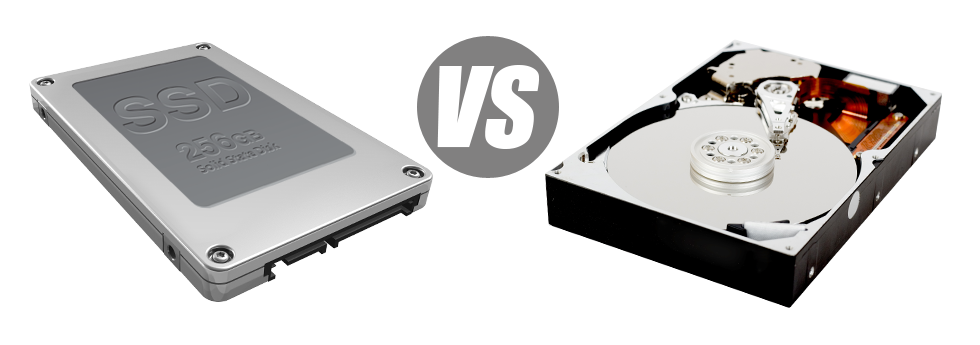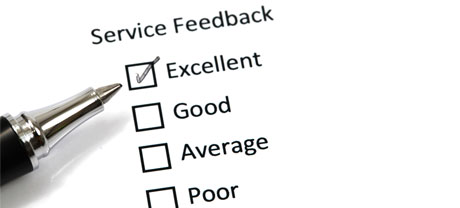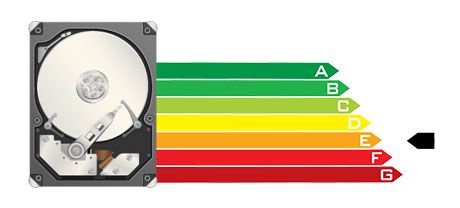Once you have a web site or perhaps an application, rate of operation is important. The quicker your website functions and then the swifter your apps perform, the better for everyone. Because a web site is a collection of data files that talk with one another, the systems that keep and access these data files have a huge role in website operation.
Hard disk drives, or HDDs, were, right up until recent times, the most efficient devices for keeping information. Then again, in recent years solid–state drives, or SSDs, have been becoming more popular. Check out our comparison chart to find out if HDDs or SSDs are more appropriate for you.
1. Access Time
SSD drives offer a completely new & imaginative solution to data safe–keeping based on the usage of electronic interfaces in lieu of any moving components and spinning disks. This different technology is noticeably faster, permitting a 0.1 millisecond data accessibility time.
HDD drives make use of rotating disks for files storage reasons. Each time a file is being used, you will have to wait around for the appropriate disk to get to the appropriate place for the laser beam to view the file involved. This ends in a typical access rate of 5 to 8 milliseconds.
2. Random I/O Performance
With thanks to the exact same radical solution allowing for speedier access times, it is possible to take pleasure in improved I/O efficiency with SSD drives. They will conduct double as many functions throughout a given time when compared to an HDD drive.
An SSD can manage at the very least 6000 IO’s per second.
With a HDD drive, the I/O performance progressively enhances the more you use the drive. Nevertheless, in the past it actually reaches a specific limitation, it can’t go faster. And due to the now–old concept, that I/O limit is significantly less than what you can get with an SSD.
HDD can only go as far as 400 IO’s per second.
3. Reliability
SSD drives do not have any kind of rotating components, which means there’s far less machinery within them. And the less actually moving components you will find, the lower the chances of failure are going to be.
The standard rate of failure of any SSD drive is 0.5%.
Since we already have mentioned, HDD drives rely upon spinning hard disks. And something that works by using lots of moving components for extended intervals is more prone to failure.
HDD drives’ regular rate of failing varies among 2% and 5%.
4. Energy Conservation
SSDs don’t have moving parts and require little or no cooling down energy. Additionally, they call for a small amount of power to perform – trials have demonstrated they can be powered by a regular AA battery.
In general, SSDs take in between 2 and 5 watts.
From the moment they have been built, HDDs were always very electricity–ravenous products. So when you’ve got a web server with several HDD drives, this will likely boost the regular monthly utility bill.
On average, HDDs consume between 6 and 15 watts.
5. CPU Power
SSD drives support quicker file accessibility rates, which will, subsequently, allow the CPU to finish data file calls much faster and then to go back to additional tasks.
The normal I/O hold out for SSD drives is barely 1%.
HDD drives support slower accessibility speeds when compared with SSDs do, which will result for the CPU being forced to wait around, although saving allocations for the HDD to find and return the required file.
The standard I/O wait for HDD drives is just about 7%.
6.Input/Output Request Times
The bulk of our brand new machines are now using exclusively SSD drives. All of our tests have revealed that with an SSD, the average service time for an I/O request whilst running a backup remains under 20 ms.
In comparison with SSD drives, HDDs deliver much slower service times for input/output demands. In a web server backup, the normal service time for any I/O query ranges somewhere between 400 and 500 ms.
7. Backup Rates
Another real–life enhancement will be the speed at which the back–up has been made. With SSDs, a server back up now takes under 6 hours by making use of our web server–enhanced software.
We utilized HDDs mainly for several years and we have now pretty good expertise in precisely how an HDD runs. Generating a backup for a hosting server designed with HDD drives can take about 20 to 24 hours.
To be able to right away boost the performance of your web sites without needing to modify any kind of code, an SSD–driven hosting solution is a very good choice. Look at Sadiq Soft’s cloud plans packages along with our VPS plans – these hosting services include fast SSD drives and can be found at good prices.
Hepsia
- Live Demo
Service guarantees
- Register now. There won’t be any installation charges and you will have total root access to your server. 99.9% network availability is warranted.
Compare our prices
- Find out more about our price list and choose the very best Virtual Private Server for your dynamic sites. You can easily migrate to a more advanced VPS setup with just a mouse click.
- Compare our hosting plans
Contact Us
- Our representatives are on duty for you day and night to answer any questions in relation to our VPS services. 1–hour reply time frame guarantee.














